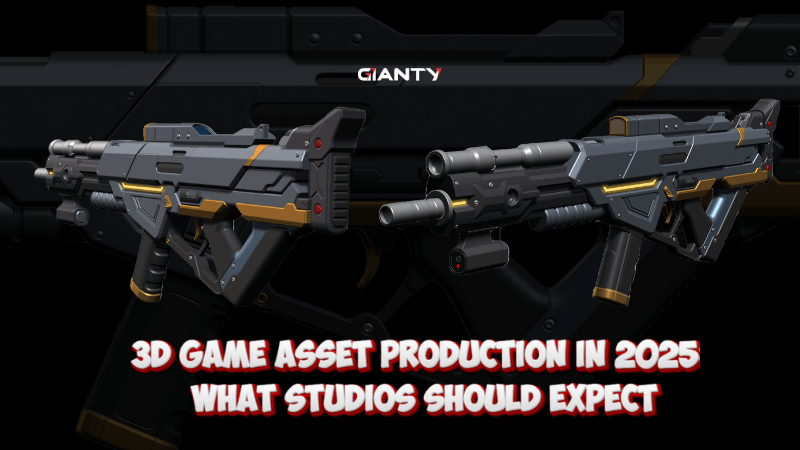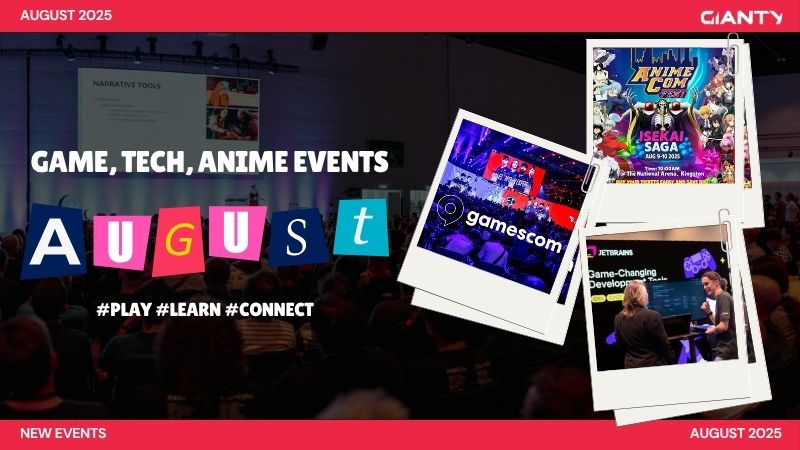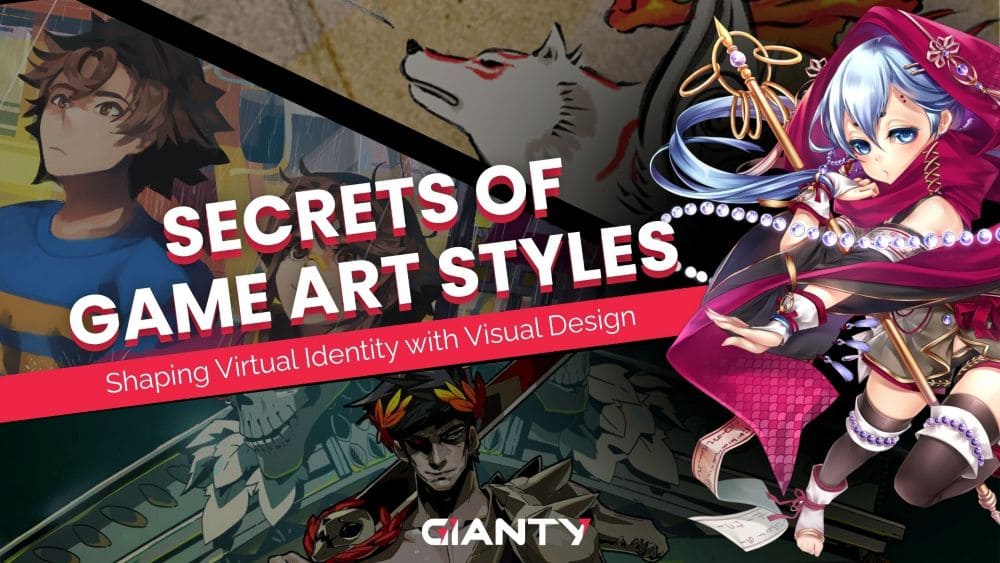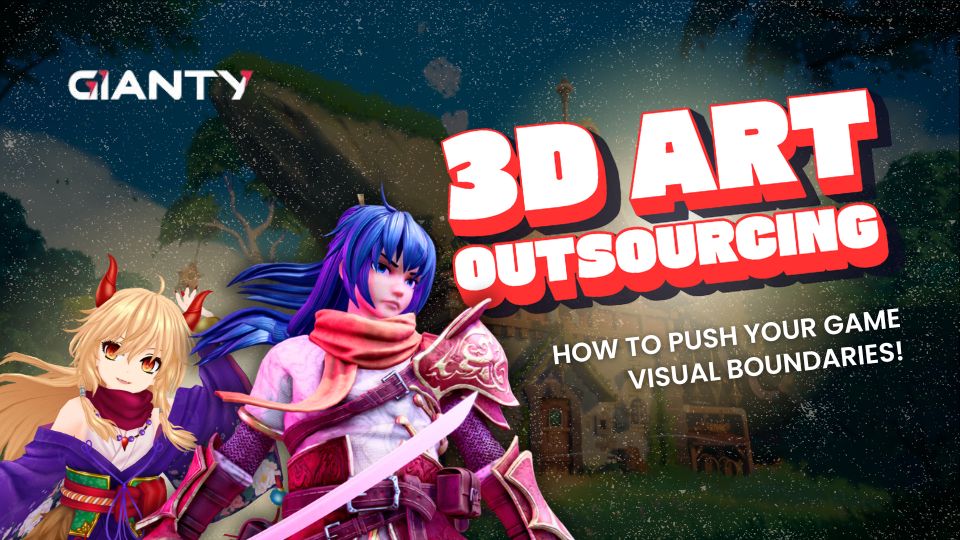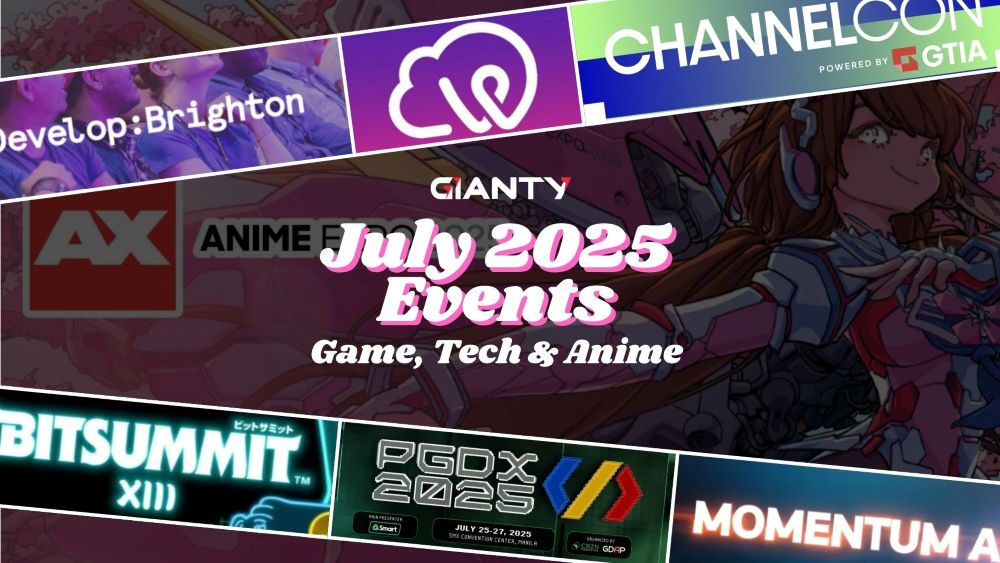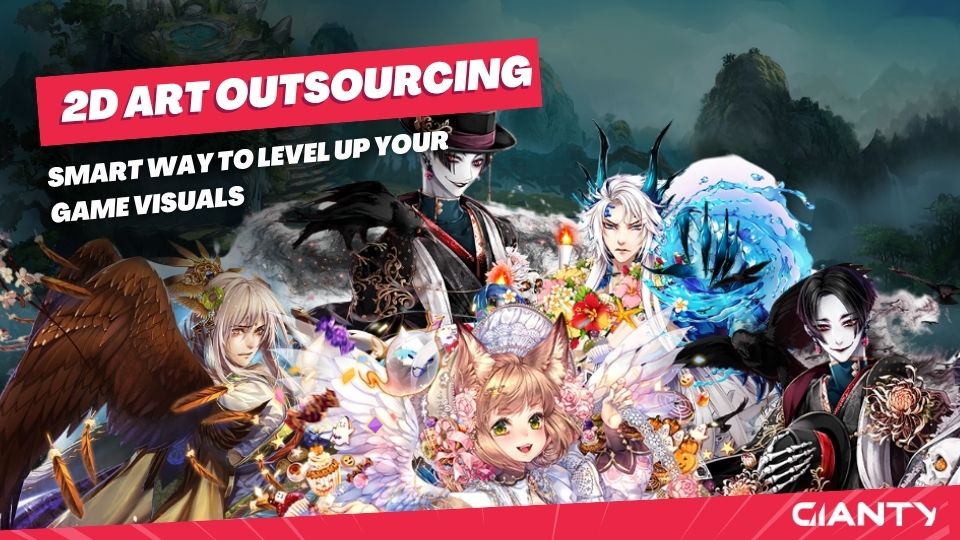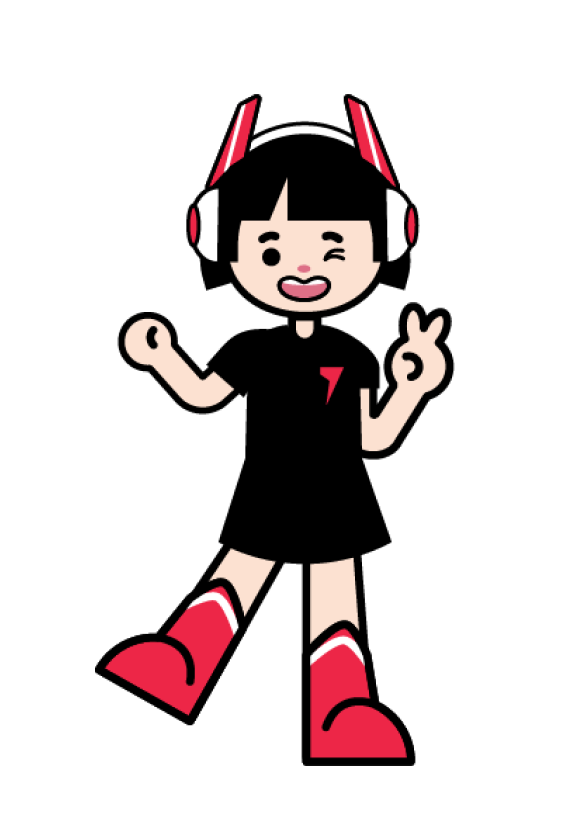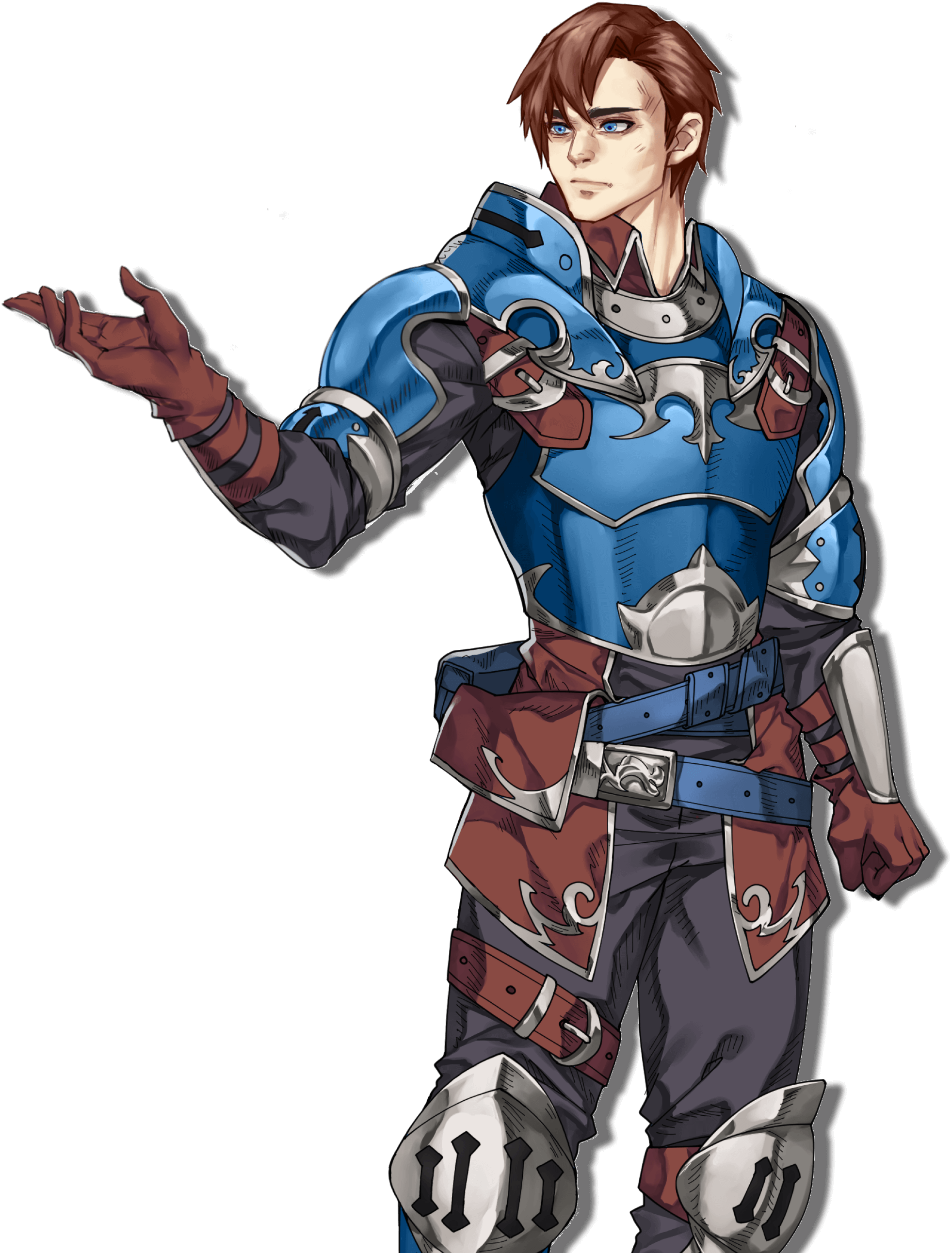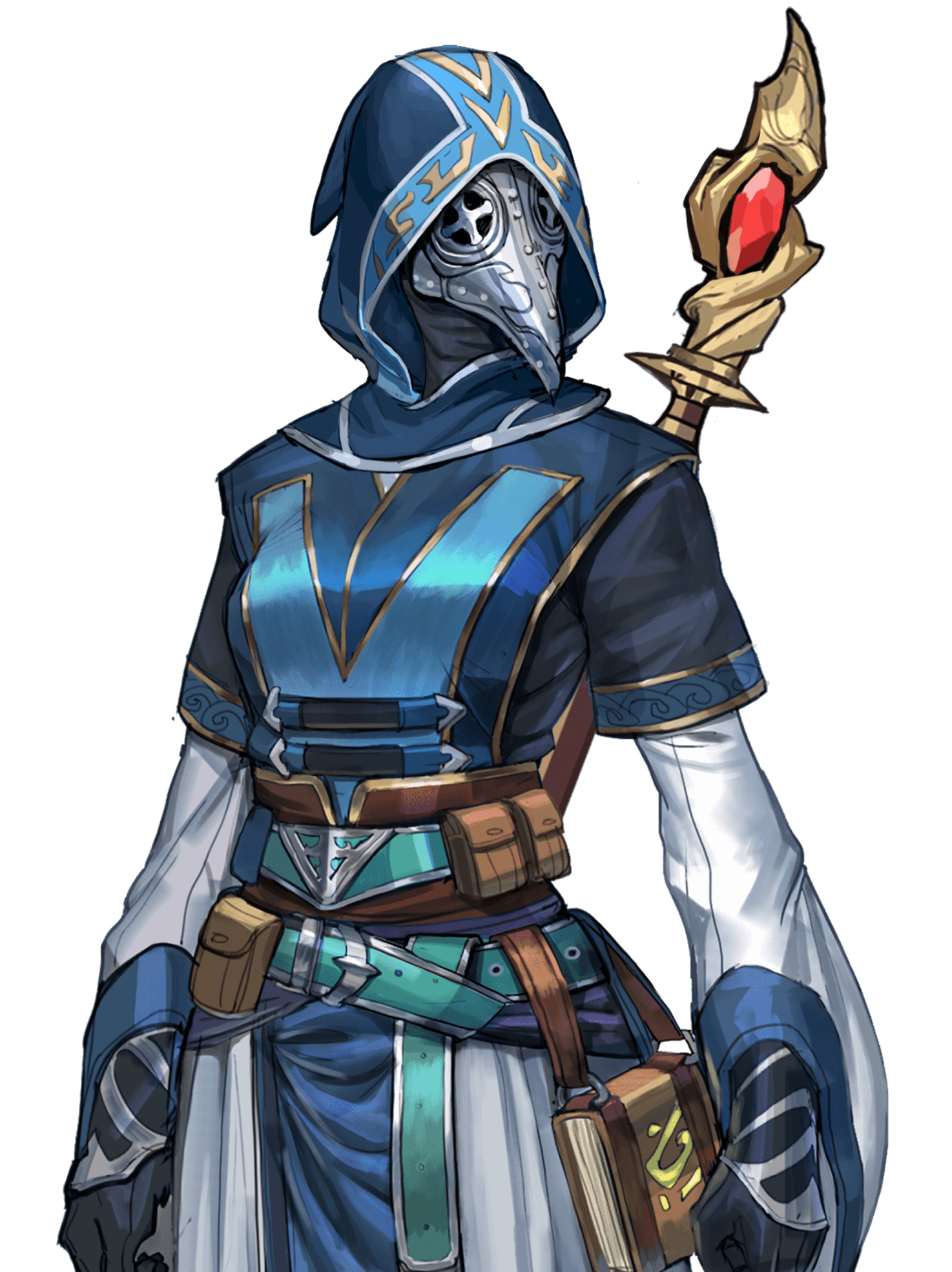In the dynamic world of video games, a captivating art style will grab gamers’ attention and bring unforgettable experiences. While 3D graphics push technological boundaries, 2D art styles remain a timeless preference, with 65% of casual gamers prefer 2D experiences for their nostalgia and familiarity.
From the retro charm of pixel art to the emotive depth of hand-drawn illustrations, selecting the right 2D game art style can make or break the impact that your game has on the players.
In this blog post, we will dive into the most influential 2D art styles and discover how they can bring your vision to a vibrant reality on one of the most immersive entertainment mediums — video games.
Top 4 popular 2D art styles in 2025
In the early years of video games, basic technology limited visuals to simple shapes and minimal details. As software and hardware technology advanced over time, developers gained the tools to add more creativity and detail to their games, allowing a variety of 2D game types to emerge. Defined by its simplicity and iconic visuals, these art styles can bring nostalgia, inspire creativity, and evoke a wide range of emotions in players.
In 2025, these 2D art styles will be at the forefront of gaming innovation, blending classic aesthetics with cutting-edge technology to elevate B2B brands in gaming, advertising, and beyond. Here are some of the most popular styles that you might encounter in your gaming adventures, whether you’re playing or creating.
1. Pixel Art
Undoubtedly the staple of 2D art style for decades, pixel art is characterized by its blocky, bitmap-based retro aesthetics with strong color contrasts. More than a glimpse of the past from the ‘70s to ‘90s, pixel art has now experienced a remarkable revival in recent years, blending nostalgia with modern gaming mechanics. Games like Stardew Valley and Celeste have constantly leveraged pixel art to create immersive worlds that feel both familiar and innovative.
For example, Stardew Valley’s art style played a crucial role in its massive player base and indie success. Its pixel art aesthetic, combined with a charming and inviting atmosphere, created a unique and appealing visual experience that resonated with a wide audience. As a result, due to its cost-effectiveness and emotional appeal, pixel art has become the “Holy Grail” for indie games.
Advantages of this art style:
- Simplicity: The simplicity of pixel art removes visual clutter, letting players concentrate on game mechanics rather than flashy graphics.
- Unique nostalgia: This classic 8- or 16-bit game style connects deeply with generational audiences. Many indie developers use it to honor gaming’s early era while adding modern twists.
- Ease of development: Developing 2D-pixel art is budget-friendly, requiring less time, skills, and resources to produce high-quality visuals.
- Cross-device compatibility: Pixel art games don’t need powerful hardware to run smoothly, making them accessible to players with low-spec computers or phones.

2. Hand-drawn Art
Hand-drawn art has always been a favorite in indie games, where each frame is carefully crafted by hand, either physically or digitally. This approach creates a vibrant and artistic world that enhances the gameplay experience while bringing a human touch with expressive textures and emotional depth to digital designs that often lack. Games using this art style stand out for their attention to detail and craftsmanship, making it perfect for story-driven games or genres that require a strong emotional connection between the player and the world. Titles like Cuphead and Hollow Knight prove the power of hand-drawn animations to tell compelling stories with authenticity and personality.
Advantages of this art style:
- Distinctive visuals: Hand-drawn art delivers a unique, artisanal quality that sets each game apart in a competitive market since it reflects the personal styles of the artist or team behind it.
- Storytelling focus: The rich and detailed character designs often enhance the narrative and atmospheric setting, improving the storytelling experience.
- Timelessness: A distinctive art style allows hand-drawn games to maintain a lasting experience, with an aesthetic resemblance to traditional animation and comic books
- Genre versatility: With various styles of hand-drawn art, this approach can be used across multiple genres, from 2D platformers to RPGs. Its application even extends beyond games, reaching into advertising sectors.
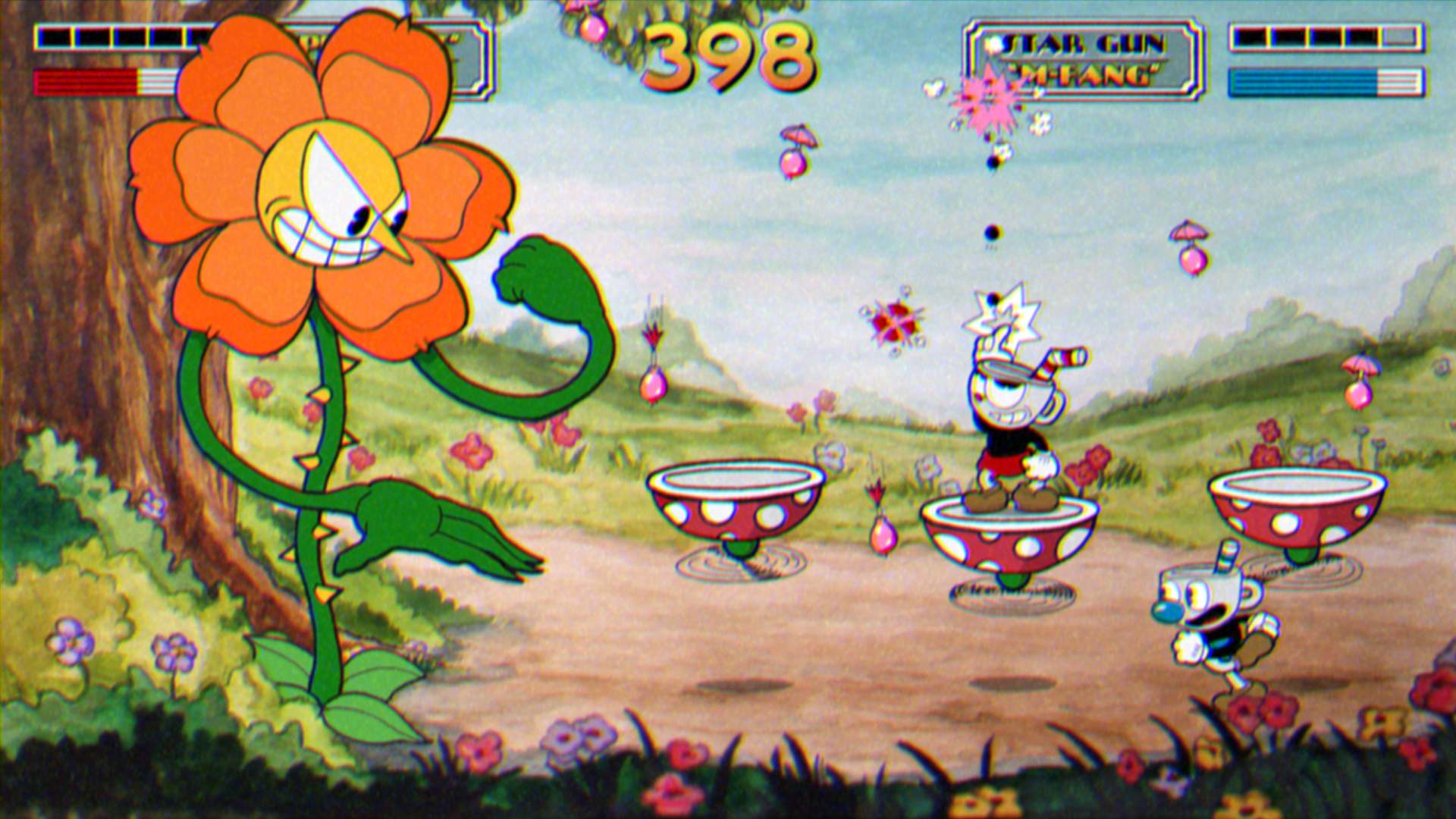
3. Vector Art
Vector art is renowned for its scalability and clean, modern look, reflecting the advancement from pixel art. Using mathematical equations to define shapes, vector art can be resized without losing quality, making it ideal for applications ranging from billboards to mobile games and apps. Vector art is especially ideal for 2D games that blend clean, bright, and high-quality visual components, which remain a preferred choice among game artists and designers.
For example, while Monument Valley challenges players with surreal structure and impossible geometries, Rayman Legends showcases the ability to create visually stunning experiences. Additionally, vector game art is commonly used in marketing and branding because of its scalability. It helps create a unique brand identity and maintains consistency across different platforms and channels.
Advantages of this art style:
- Clear-cut lines: Using simple lines, dots, and polygons, vector art is ideal for 2D games that highlight abstract concepts or minimalism (like casual 2D puzzle games). Moreover, vector art is also used in mobile apps, such as e-learning, to create engaging and informative lessons.
- Ease of development: Using vector graphic software like Adobe Illustrator makes creating or modifying in-game assets and transforming animations much easier, saving time and effort.
- Adaptability: Vector graphics retain their lightness, sharpness, and quality when resized, which is essential for multi-platform modern games.
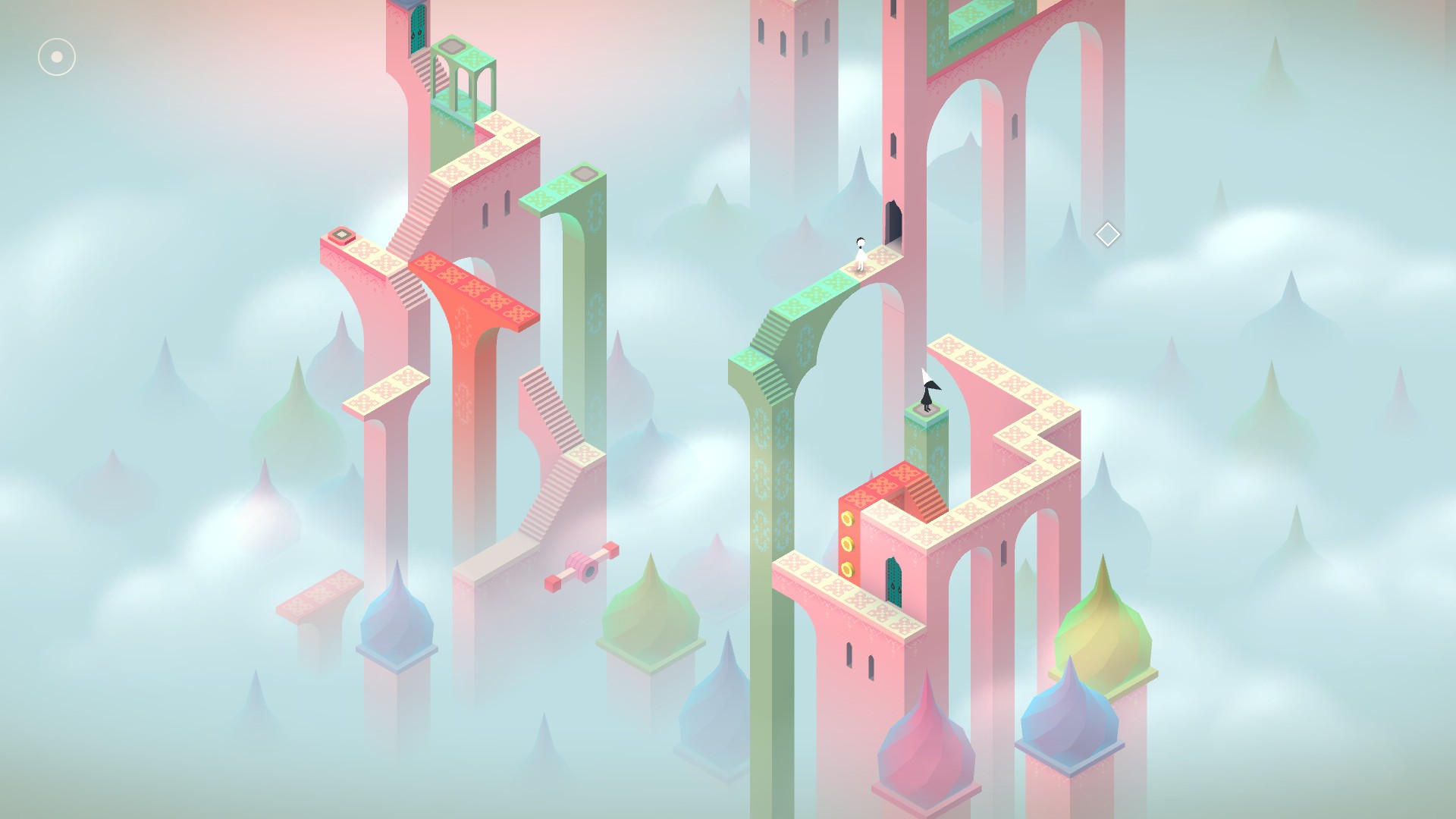
4. Cel-shaded Art
Cel-shaded art offers a distinctive cartoon-like vibe, characterized by solid colors and clear, black outlines. Game artists apply cel-shading to make 3D models and objects look 2D – flat, and paper-like – creating an exciting blend of dimensions in game design. Although this art style is relatively recent, it has greatly impacted modern game development with dozens of successful examples. For example, cel-shading has played a crucial role in shaping the unique visual style of notable games like Borderlands and The Walking Dead. As a result, the resurgence of cel-shaded games in recent years has raised the bar for stylized 3D graphics.
Advantages of this art style:
- Hybrid 2D/3D feel: Cel-shaded art combines the charm of 2D with the depth of 3D, to create animated, eye-catching visuals and unique retro aesthetics.
- Storytelling focus: Cel-shading is known as one of the most important tools for video game adaptations of other media, particularly comics and anime. Its bold outlines and moody atmosphere enhance character and narrative focus, making it ideal for storytelling-focused games.
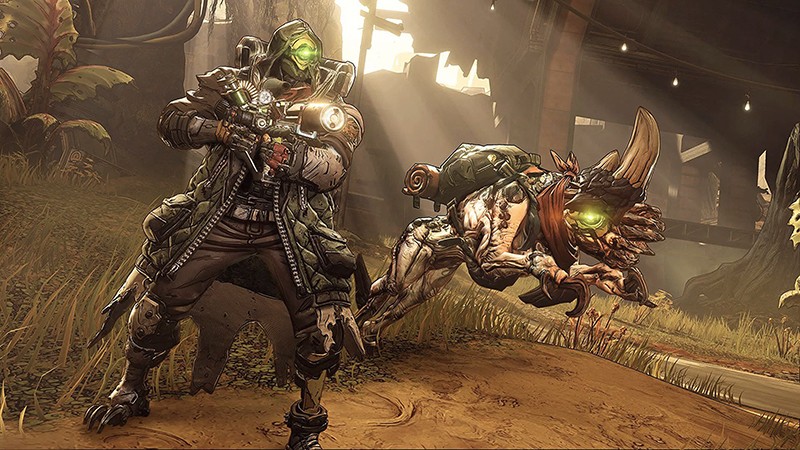
How to choose the right 2D art style for your game
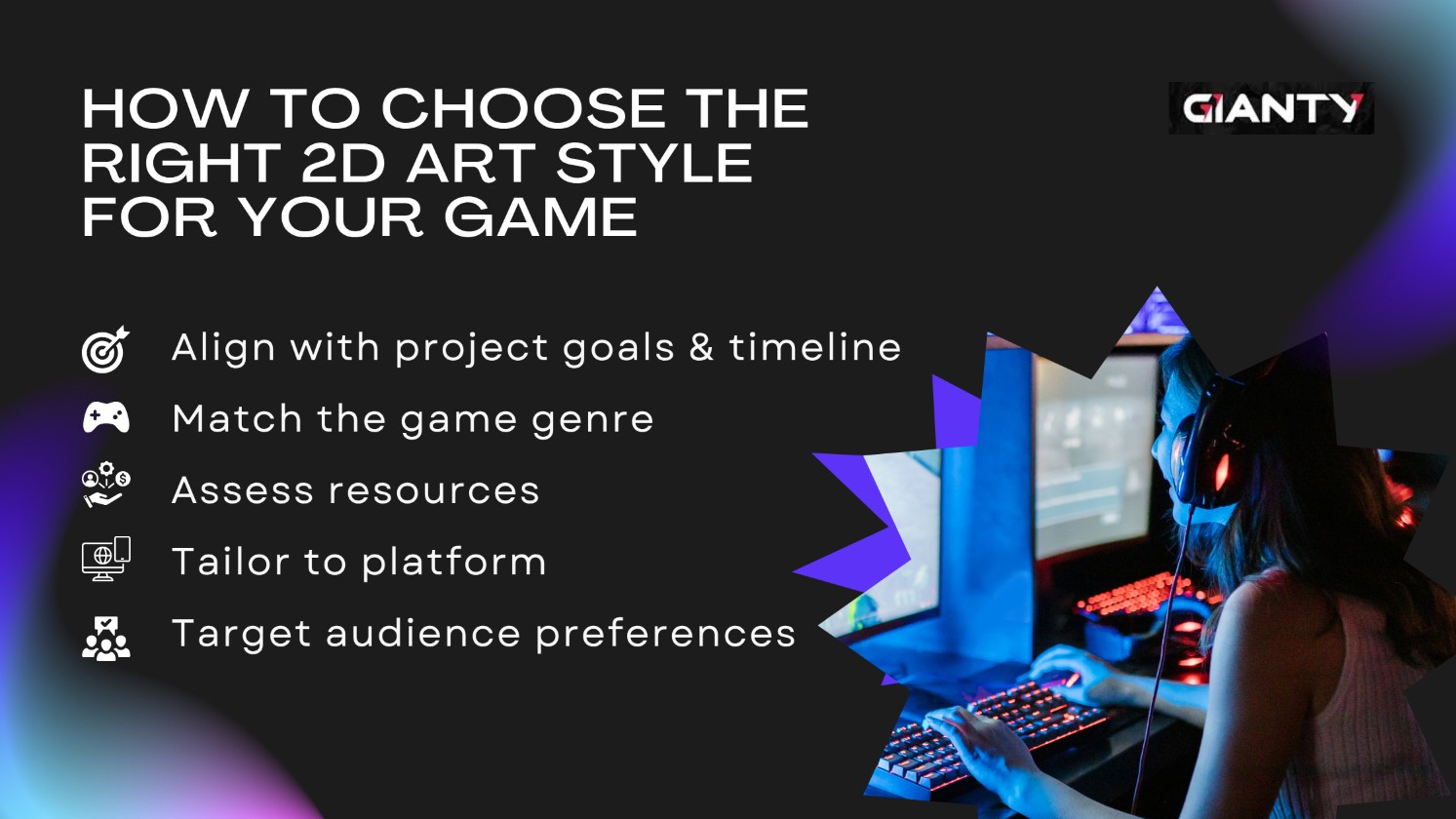
1. Align with project goals & timeline
Choose a style that matches your game’s purpose, as all styles serve different functions:
- Pixel art reinforces nostalgia and complements classic gameplay mechanics.
- Vector art suits minimalist and abstract experiences.
2. Match the Game Genre
If you’re focused on a specific genre, ensure that the game style is appropriate to enhance its effectiveness:
- Hand-drawn art enhances atmospheric 2D platformers or indie titles.
- Cel-shaded graphics work well for strategy games and RPGs, offering depth and tactical clarity.
3. Assess Resources
Factor in your team’s time, capacity, and budget to choose the right style:
- Small teams: Opt for streamlined styles like vector or flat graphics for efficiency and low cost.
- Larger teams: Invest in detailed hand-drawn art for visually rich, high-quality results and higher ROI.
An effective solution to reduce production time and costs is to outsource art and animation to specialized companies with reputable portfolios. At GIANTY, we commit to delivering customized solutions that enhance engagement and return on investment (ROI) by utilizing suitable art styles and ensuring high visual quality. By taking care of art production, your teams can focus on essential development tasks to deliver the best products possible.
4. Tailor to Platform
Prioritize platform compatibility:
- Mobile: Use crisp, scalable styles like pixel, flat, or vector art for small screens.
- PC/Consoles: Leverage hand-drawn or cel-shaded styles for immersive, detailed visuals.
5. Target Audience Preferences
Understand player demographics to effectively target the desired audience:
- Younger audiences: Lean into vibrant cartoon-inspired styles (e.g., cel-shaded or hand-drawn art).
- Retro enthusiasts: Embrace pixel art to tap into nostalgic appeal.
Emerging trends shaping 2025’s 2D art landscape
AI and Automation Tools
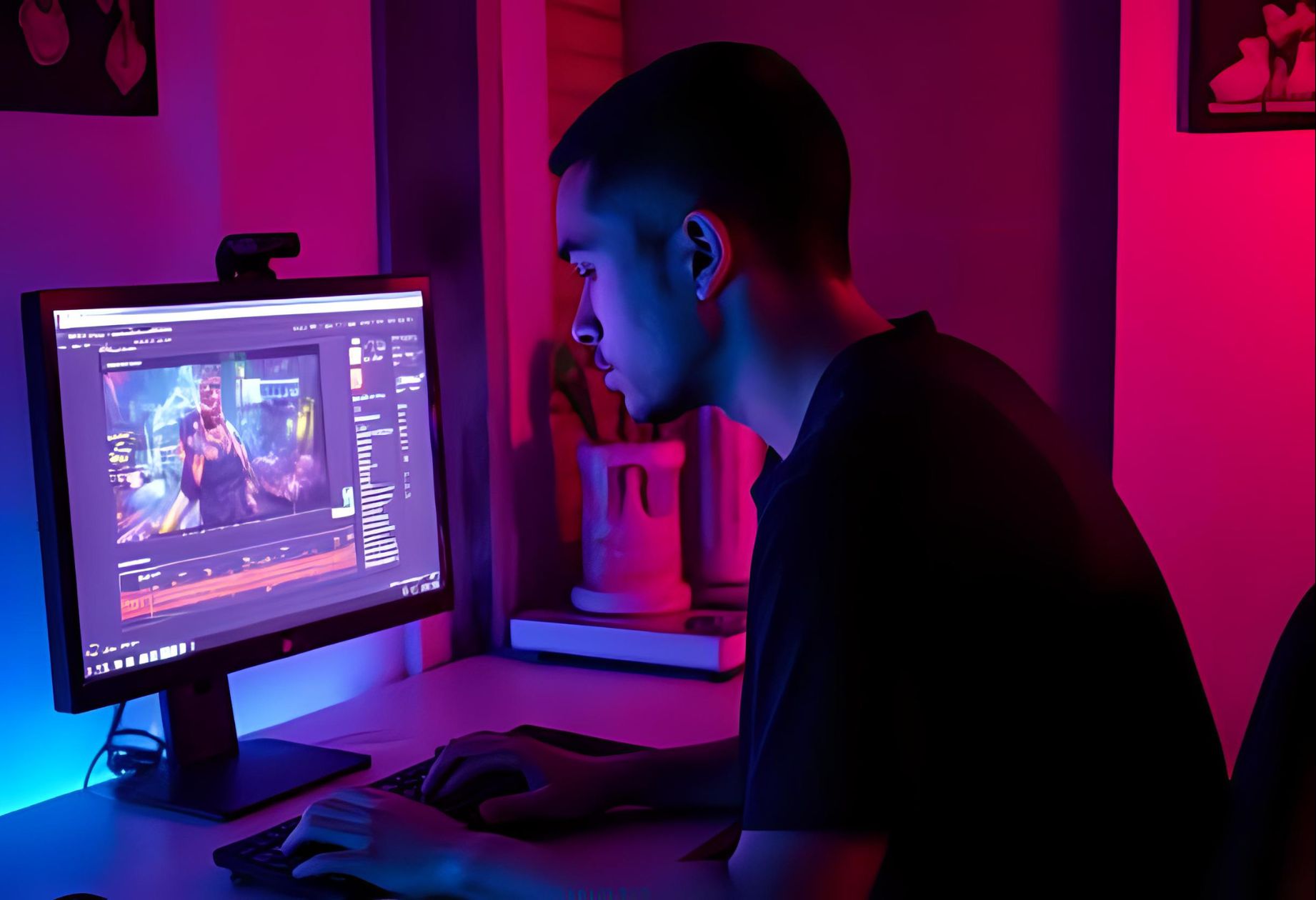
AI and automation transform 2D animation by streamlining intermediate tasks and automating and enhancing complex techniques. For instance, AI-powered tools like Spine and Live2D enable skeletal animation without manual frame-by-frame work. These advancements cut production time while preserving the charm of hand-drawn animation. By 2025, we’ll certainly see more AI-driven software in animation workflows, optimizing development without retaining high-quality art.
Revival of Hand-painted and Frame-by-frame Animations
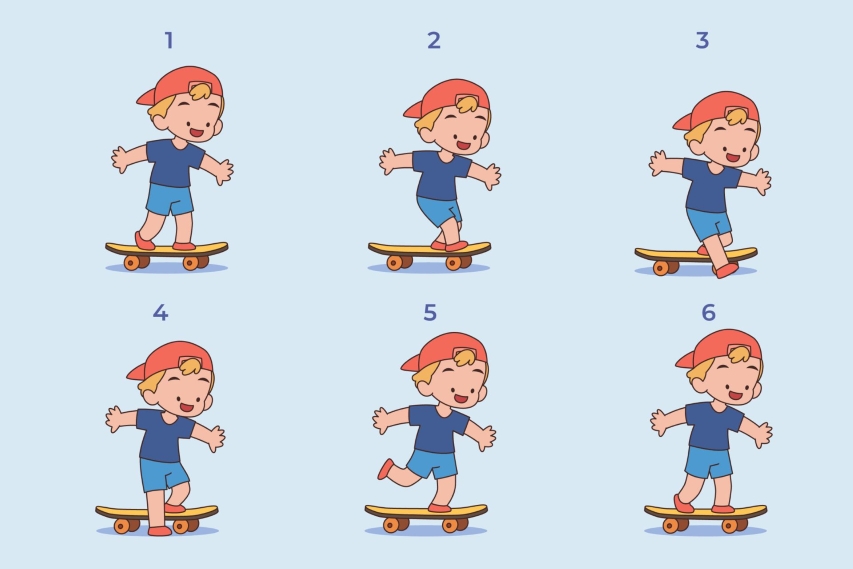
With the rise of AI and automation, people are becoming more fond of traditional manual animation methods. Studios are rediscovering classic artistic animation to create unique and expressive visual effects that stand out in a competitive landscape.
VR/AR Integration
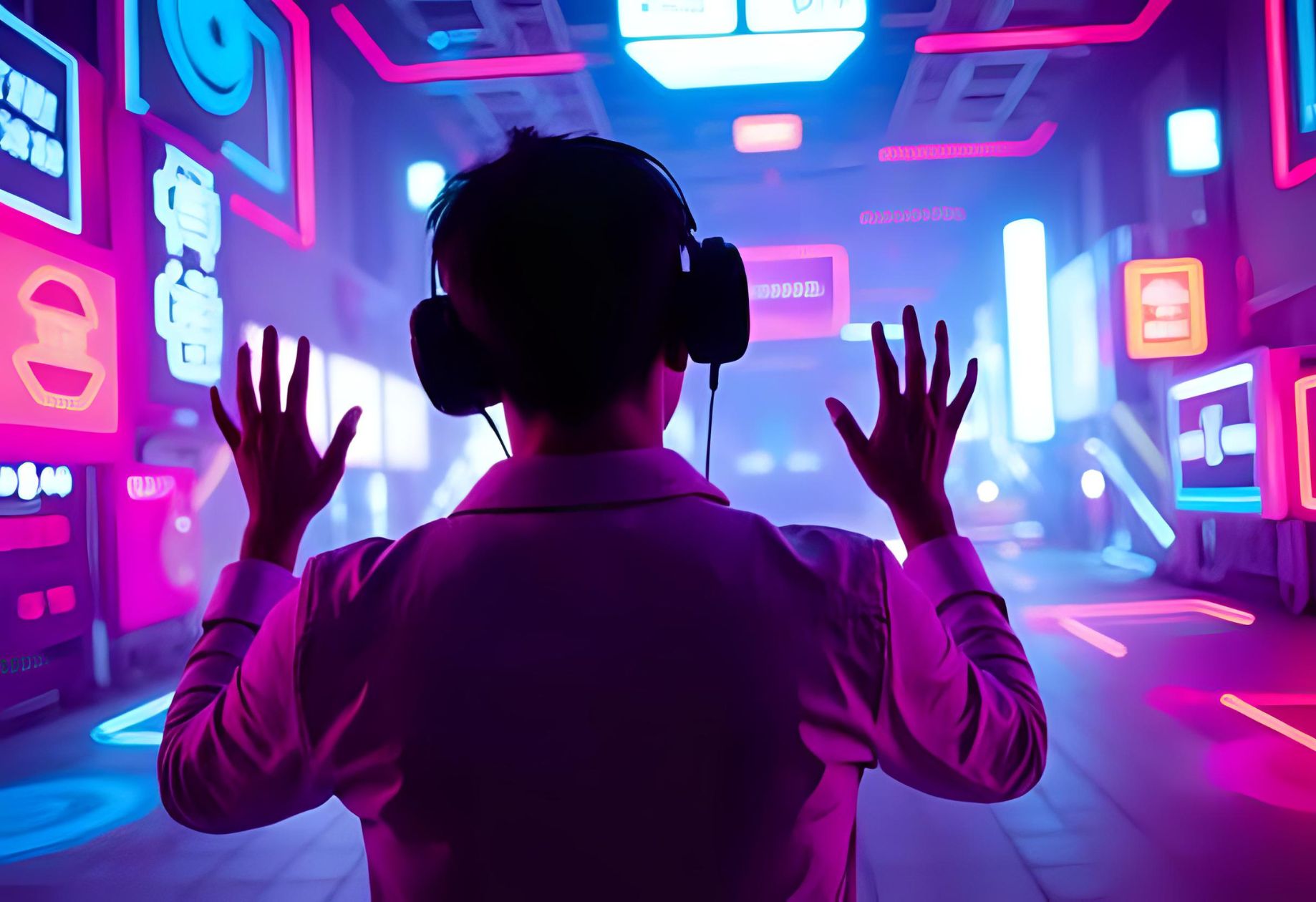
While 3D materials have dominated VR and AR over the past few years, there’s an emerging focus on experimental 2D VR/AR projects. Interactive 2D environments and animated overlays are enhancing the immersive experience through VR tools like Meta’s Oculus Quest 3S apps.
Procedural Animation
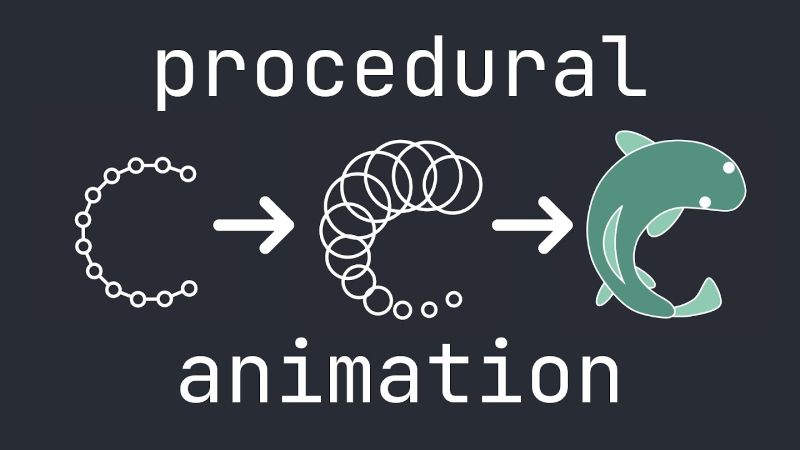
Interactive and procedural animation in 2D games allows characters to respond dynamically to player actions and environmental cues. Thanks to these advancements, 2D games are becoming increasingly engaging and responsive, a trend that is likely to persist in future titles.
Conclusion
Selecting the right 2D art style for your game or brand requires a strategic balance of creative vision and practical constraints. By aligning the style with your project goals, genre, platforms, and audiences, and assessing available resources, you can create a visually compelling game that stands out in the competitive gaming industry.
Whether you opt for the nostalgic charm of pixel art, the emotional depth of hand-drawn illustrations, the efficiency of vector graphics, or the vibrant appeal of cartoon-style art, your choice will shape the player’s experience and define your game’s identity. Use this guide to navigate the decision-making process and bring your game’s vision to life with a 2D art style that captivates and inspires.
If you’re looking for an extra hand on perfecting 2D art, GIANTY offers a comprehensive range of services — from concept art to animations, 2D art design to 3D modeling, and more. Explore our portfolio for examples of our work. Let our expertise help you visualize your game, product, or brand in reality.



